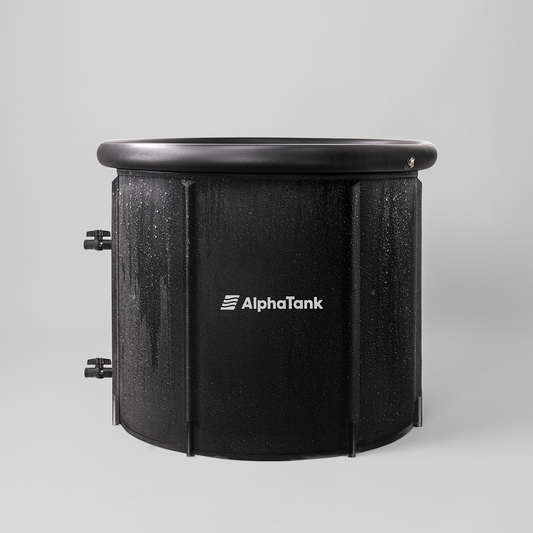The numerous benefits of cold-water immersion therapy, ranging from muscle recovery and stress reduction to improved circulation, have enticed individuals from all walks of life. While the physical advantages of ice baths are well-established, mastering the art of proper breathing techniques during these icy plunges can significantly enhance your experience and magnify the advantages. In this article, we'll delve into a variety of breathing methods that will not only help you make the most of your ice bath sessions but also contribute to your overall well-being. Drawing inspiration from previous articles, we will explore the techniques that can elevate your ice bath journey.
The Rhythmic Breath: A Foundation for Comfort
One of the simplest yet highly effective breathing techniques for ice baths is the rhythmic breath. This method involves establishing a consistent breathing pattern to maintain composure and calmness while in the icy water. By focusing on regulating your breath, you can minimize the shock of cold water and sustain your composure throughout the experience. Here's how to do it:
- Begin by inhaling deeply through your nose for a count of four.
- Hold your breath for a count of four.
- Exhale slowly and completely through your mouth for a count of eight.
- Repeat this cycle throughout your ice bath session.
The rhythmic breath serves as a reliable anchor, helping you regulate your heart rate and remain focused and in control.
The Box Breath: Cultivating Balance and Centeredness
Another powerful technique to employ during ice baths is the box breath, also known as the square breath. This method promotes relaxation, reduces anxiety, and keeps your mind centered, allowing you to face the icy waters with a sense of balance. Here's how it works:
- Inhale through your nose for a count of four.
- Hold your breath for a count of four.
- Exhale through your mouth for a count of four.
- Pause and hold your breath for a count of four.
- Repeat this pattern consistently during your ice bath.
The box breath encourages a harmonious and steady state of mind, enabling you to endure the cold more comfortably.
The Energizing Breath: A Morning Boost
For those seeking an invigorating start to their day, the energizing breath technique is an excellent choice. It's a quick and effective way to awaken your senses, increase alertness, and prepare for the challenges of the day:
- Take rapid, shallow breaths through your nose for 15-20 seconds.
- Exhale forcefully through your mouth, as if blowing out a candle.
Performing this sequence at the beginning of your ice bath session triggers a surge of adrenaline, boosting your energy levels and mental focus.
The Mindful Breath: Connecting with the Experience
If you view ice baths as an opportunity for mindfulness and introspection, the mindful breath technique aligns perfectly with your goals. This method invites you to immerse yourself in the present moment and deepen your connection with the experience:
- Inhale deeply through your nose, focusing on the sensation of the cold water against your skin.
- Hold your breath briefly, acknowledging any discomfort or sensations.
- Exhale slowly through your mouth, releasing tension and stress.
The mindful breath encourages mindfulness, enhances your connection with the experience, and contributes to your overall well-being.
Conclusion:
Mastering the art of breathing during ice baths can transform these chilly immersions into powerful tools for physical and mental well-being. Whether you prefer the rhythmic breath for composure, the box breath for balance, the energizing breath for a morning boost, or the mindful breath for mindfulness, finding the right technique for you can elevate your ice bath experience. Remember that safety should always be your priority, and consulting with a healthcare professional is advisable if you have any underlying medical conditions. With practice and patience, you'll harness the full potential of ice baths and reap their myriad benefits, combining the wisdom of past insights with your newfound mastery of breath control.




